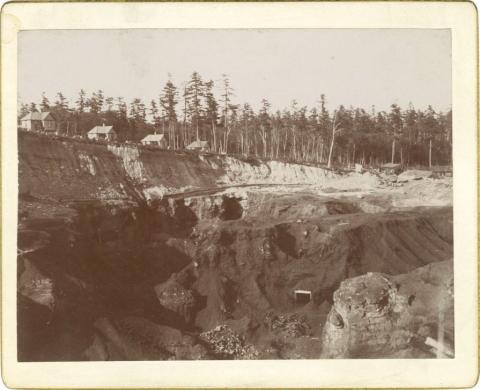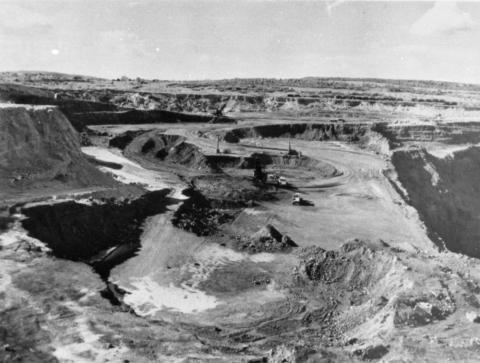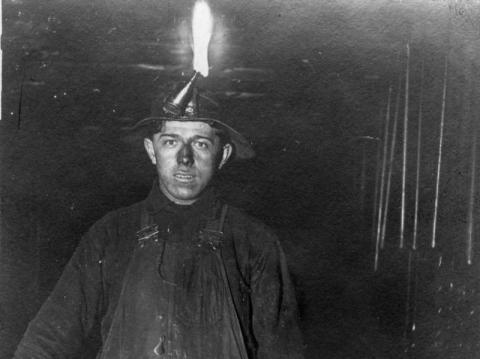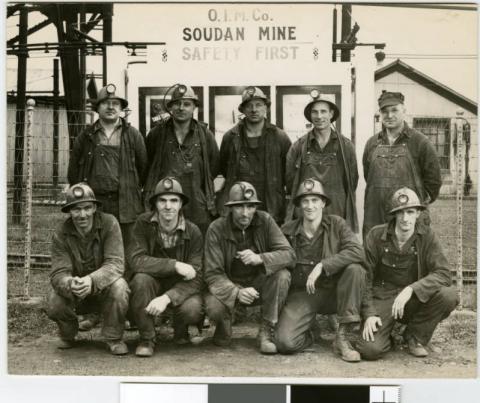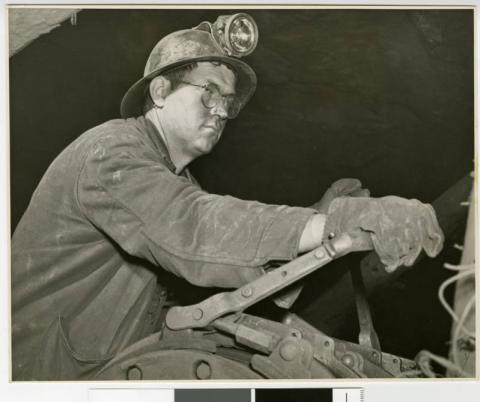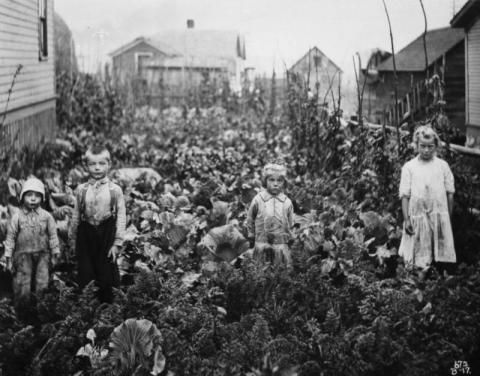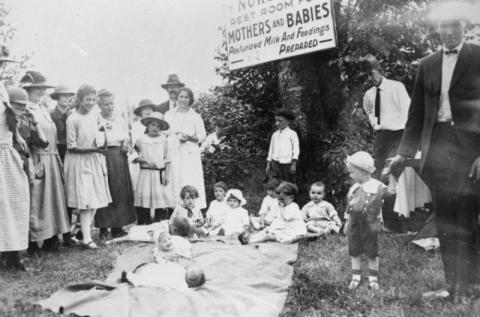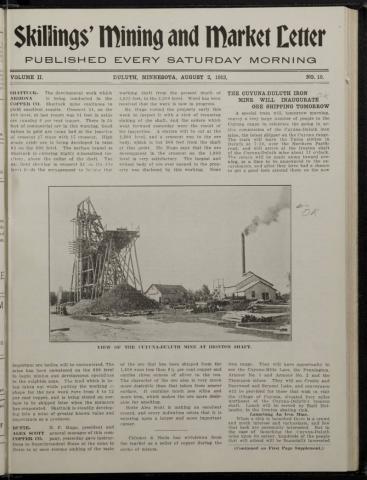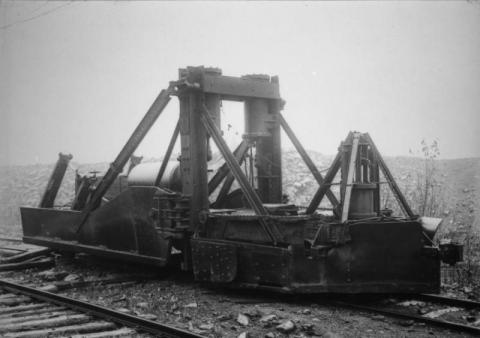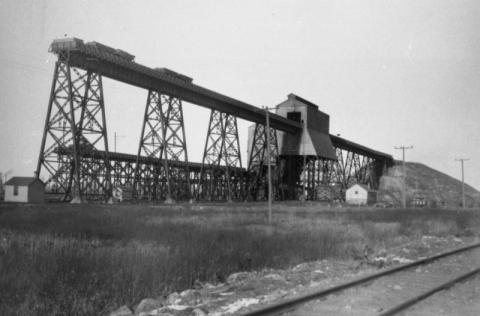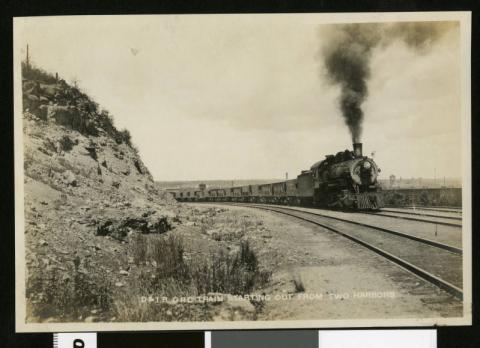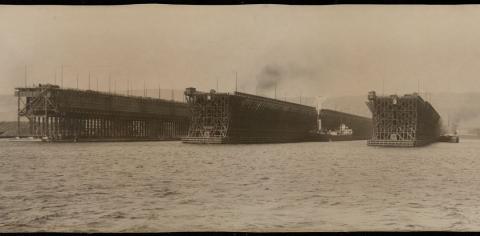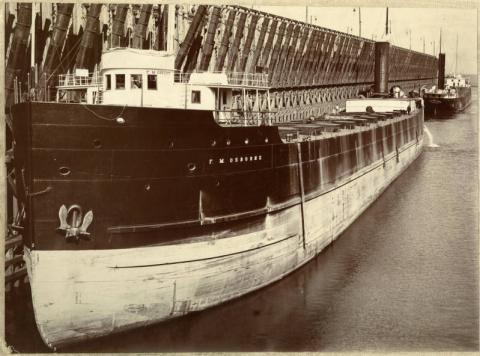Primary Source Set
by Greta Bahnemann, Metadata Librarian, Minnesota Digital Library, Minitex
Business and Industry Immigration and Ethnicity Labor
Minnesota's Iron Range is located in the state's far northeastern corner and includes the following counties: Aitkin, Carlton, Cook, Itasca, Koochiching, Lake and Saint Louis. Iron mines were generally of two types: open pit and underground.
The Iron Range includes three major iron ore deposits: Mesabi Range, Vermilion Range, and the Cuyuna Range. The iron ore deposits were extracted by immigrant miners. In the late 19th and early 20th centuries tens of thousands of people arrived in northeastern Minnesota from Finland, Austria-Hungary, Germany, Italy, Norway, Sweden and many other European countries as well as Chinese immigrant men who ran restaurants and laundry services.
Initially, miners extracted the iron ore using hand tools such as pick axes and shovels, but later used increasingly mechanized equipment. The ore was then shipped to Duluth via railroads which were built and operated by the mining companies. The ore left Duluth on lake freighters or "ore boats" bound for Detroit and Pittsburgh where the raw ore was smelted for the automotive and construction industries.
The demand for iron ore in the United States frequently mirrored larger historic events. Demand surged during the years around World War I, followed by a decreased demand during the Great Depression. World War II and the Korean War sparked boom years with many mines running at maximum production. The post-war years into the 1960s and 1970s saw decreased demand and the closure of many mines. Today iron ore is still mined on the Iron Range but in a much-diminished capacity.
Iron ore mining has had a lasting impact on Minnesota and helped to shape the state's industrial and cultural identity.
Discussion Questions & Activities
- Why did so many immigrants become miners on the Minnesota Iron Range?
- Based on the photographs of the freight train and the ore boats, how did these forms of transportation help shape iron mining? What role did Lake Superior play in sending ore to other locations?
- Examine the photographs of the Company Picnic and the Company Vegetable Garden in Ely. How do you think the mining companies shaped the communities miners lived in? Was it a positive or negative influence?
Use the items in this set to think about different perspectives within iron mining - including mine owners, supervisory employees, mine workers, children of iron miners, the role of women, etc. Break students into small groups and assign each group a particular point of view (or character) represented by these sources. These might include the mine owners, a miner, the wife of a miner, the child of a miner, etc. Each group should use items in this set to considering the following: Describe this character’s role in iron mining. How do they participate? How does this character feel about the institution of mining? What are its advantages and/or disadvantages from his/her perspective? What are this character’s goals? Dreams? Anxieties?
eLibrary Minnesota Resources (for Minnesota residents)
"Iron processing." Britannica School. Encyclopædia Britannica, Inc., 2016. Web. 22 Apr. 2016.
"Mesabi Range." Britannica School. Encyclopædia Britannica, Inc., 2016. Web. 22 Apr. 2016.
"Mining." Britannica School, Encyclopædia Britannica, 4 Aug. 2022. Accessed 10 Oct. 2025.
"Minnesota: Resources and power." Britannica School, Encyclopædia Britannica, 23 Sep. 2025. Accessed 10 Oct. 2025.
Newton, David E. "Iron." The Gale Encyclopedia of Science, edited by Katherine H. Nemeh and Jacqueline L. Longe, 6th ed., vol. 4, Gale, 2021, pp. 2455-2458. Gale In Context: High School. Accessed 10 Oct. 2025.
Rees, Jonathan. "Iron and Steel Industry." Dictionary of American History, edited by Stanley I. Kutler, 3rd ed., vol. 4, Charles Scribner's Sons, 2003, pp. 426-429. Gale In Context: High School. Accessed 10 Oct. 2025.
"Steel Industry." International Encyclopedia of the Social Sciences, edited by William A. Darity, Jr., 2nd ed., vol. 8, Macmillan Reference USA, 2008, pp. 128-130. Gale In Context: High School. Accessed 10 Oct. 2025.
"Taconite." Britannica School, Encyclopædia Britannica, 27 Aug. 2018. Accessed 10 Oct. 2025.
Additional Resources for Research
Alanen, Arnold R. “Years of Change on the Iron Range.” In Minnesota in a Century of Change: The State and Its People Since 1900, edited by Clifford E. Clark, Jr., 155–194. St. Paul: Minnesota Historical Society Press, 1989.
Backerud, Thomas. "Opening of the Mesabi Iron Range." MNopedia, Minnesota Historical Society. Accessed October 22, 2024.
Holmquist, June Drenning, ed. They Chose Minnesota: A Survey of the State’s Ethnic Groups. St. Paul: Minnesota Historical Society Press, 1981.
Kleinjung, Jennifer. "Vermilion Iron Range." MNopedia, Minnesota Historical Society. Accessed October 22, 2024.
Lamppa, Marvin G. Minnesota’s Iron Country: Rich Ore, Rich Lives. Duluth, MN: Lake Superior Port Cities Inc., 2004.
LaVigne, David. "Immigration to the Iron Range, 1880–1930." MNopedia, Minnesota Historical Society. Accessed October 22, 2024.
Sutherland, Fred. "Cuyuna Iron Range." MNopedia, Minnesota Historical Society. Accessed October 22, 2024.
Tieberg, Alex. "Mesabi Iron Range." MNopedia, Minnesota Historical Society. Accessed October 22, 2024.
Published onLast Updated on

